eNews from AlphaGalileo
December 2019
SciDev.Net and AlphaGalileo collaborate to support African researchers
AlphaGalileo is pleased to announce its collaboration with SciDev.Net to encourage more news from the African research community reaching the world’s media. Graduates of SciDev.Net’s training scheme ‘Script’ will be able to post news on AlphaGalileo free of charge.
For too long our African news section has been full of news by American and European researchers. We need to give the African research community a voice,” said Peter Green, Managing Director of AlphaGalileo. “SciDev.Net’s training initiative ‘Script’ is deservedly valued. Being able to work with it gives a wonderful start to 2020.
To make use of this facility, ’Script' researchers should register as media contributors on AlphaGalileo in the normal way. AlphaGalileo and SciDev.Net will validate the applications.
There's more about 'Script' training here.

AlphaGalileo Christmas holiday cover
As usual the AlphaGalileo service will be available over the holiday period. The News Team will be online providing the normal holiday service. And as always the best way to reach us is by email to news@alphagalileo.org
All the very best from the AlphaGalileo Team!
Image of the month
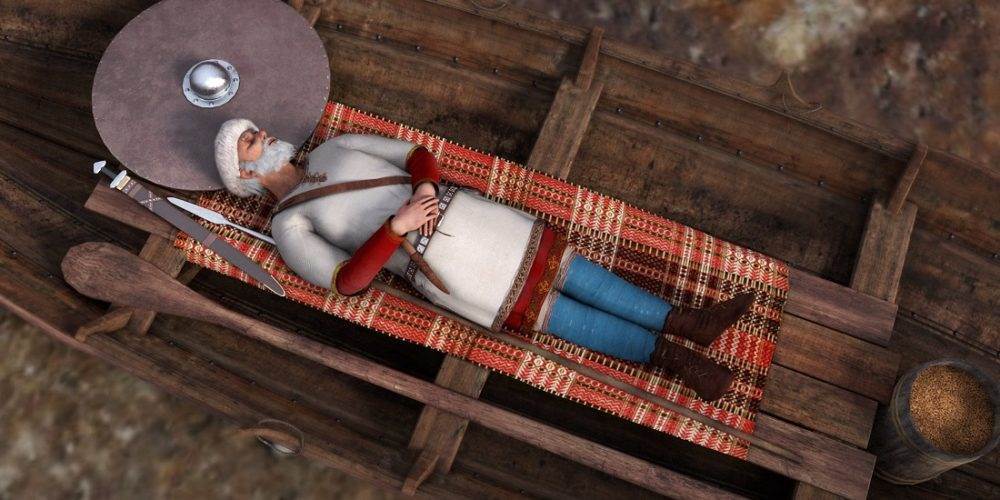
Mysterious Viking boat graves unearthed in central Norway, The Norwegian University of Science and Technology (NTNU)
In the second half of the 9th century, an important woman dies at the farm now known as Skeiet at Vinjeøra, in central Norway. Her dress is fastened at the front with two large shell-shaped brooches of gilded bronze and a crucifix-shapedbrooch, made from an Irish harness fitting. She is then placed in a boat, about seven or eight metres long. Grave goods are also buried along with body, including a pearl necklace, two scissors, a spindle whorl– and a cow head.
So far, there is nothing extraordinary about this burial ritual. It is only when the boat is buried that the Vinjeøra Vikings do something that will intrigue archaeologists more than 1000 years into the future. Instead of digging a new grave for the woman, a boat grave from the 8th century is carefully excavated. This is a larger boat, probably between nine and ten metres long. It contains the body of a man buried with weapons. The boat with the woman is gently placed inside the man's boat, and then they are both buried.
Read the news
November's Hits Parade - Top 5 items on the service
1. Chemotherapy can set the stage for drug-resistant leukemia at relapse, published by St. Jude Children's Research Hospital on 1/11/19
An International collaboration has identified therapy-induced, drug-resistance mutations in children with acute lymphoblastic leukemia who relapse.
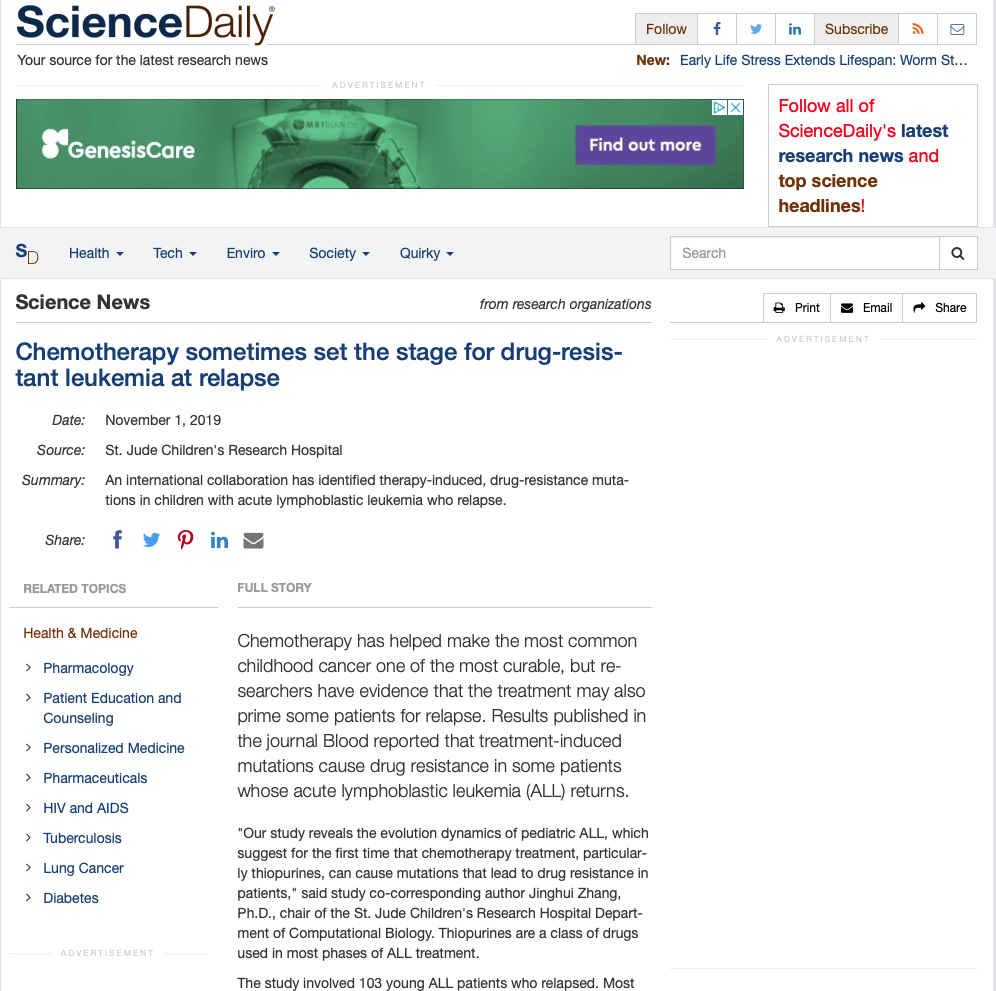
Read the news
2. New equations for estimating stature more precisely based on tibia length, published by CENIEH on 22/11/19
Gonzalo Saco Ledo of the CENIEH has recently published a paper on the creation of different specific equations to estimate stature based on the length of the tibia and stature groups, for application in the field of forensic anthropology.
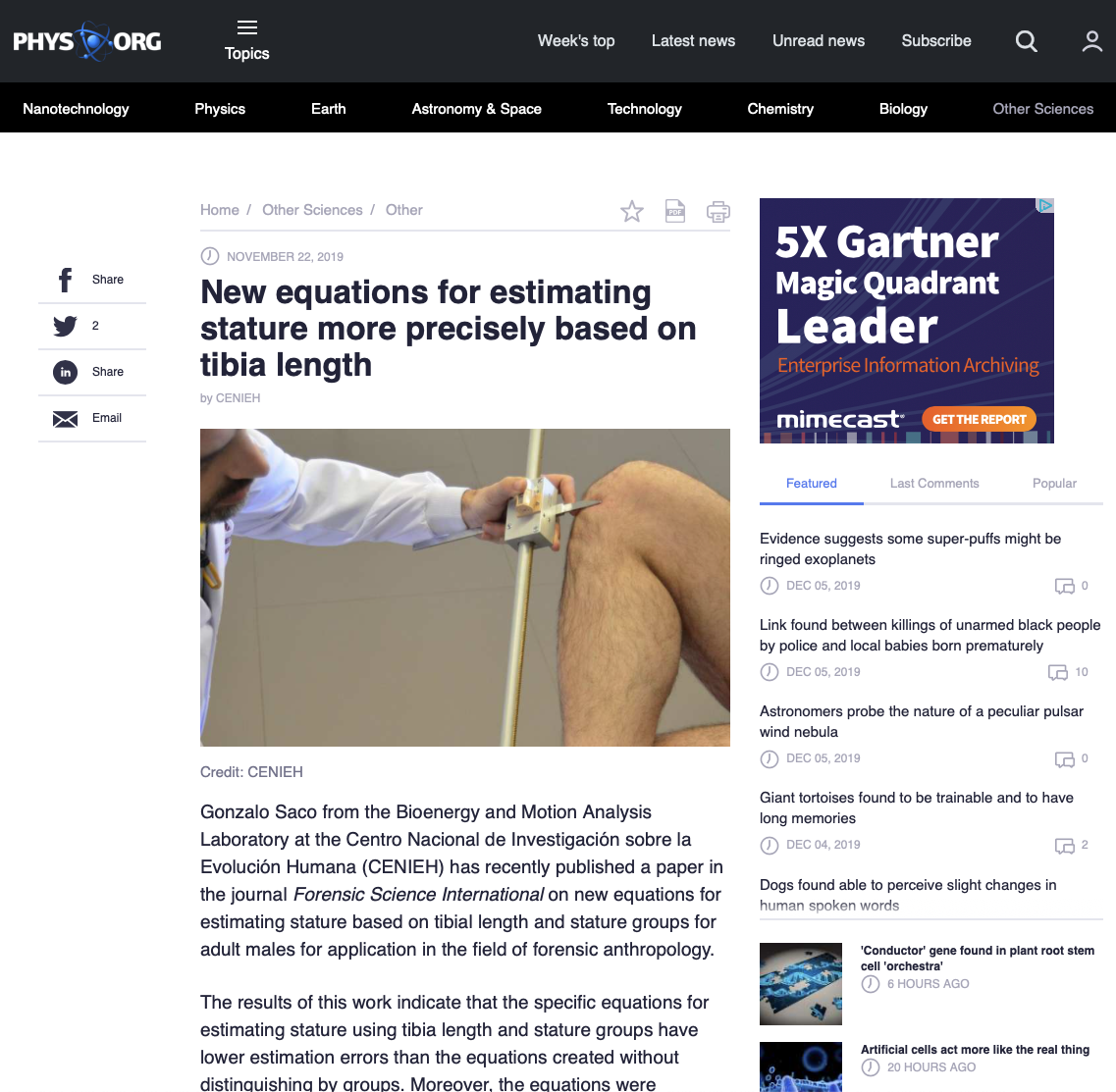
Read the news
3. Wenn Schädlinge mit ihrer eigenen Waffe geschlagen werden, published by the University of Bern on 15/11/19
Der Maiswurzelbohrer, einer der weltweit schlimmsten Maisschädlinge, kann Pflanzenabwehrstoffe nutzen, um sich damit gegen seine natürlichen Fressfeinde, die Fadenwürmer, zu verteidigen. Diese können aber ihrerseits gegen diese Stoffe immun werden und so den Maiswurzelbohrer besser in Schach halten, wie Forschende der Universität Bern zeigen. Dieser Mechanismus könnte dazu beitragen, die biologische Schädlingsbekämpfung zu verbessern.
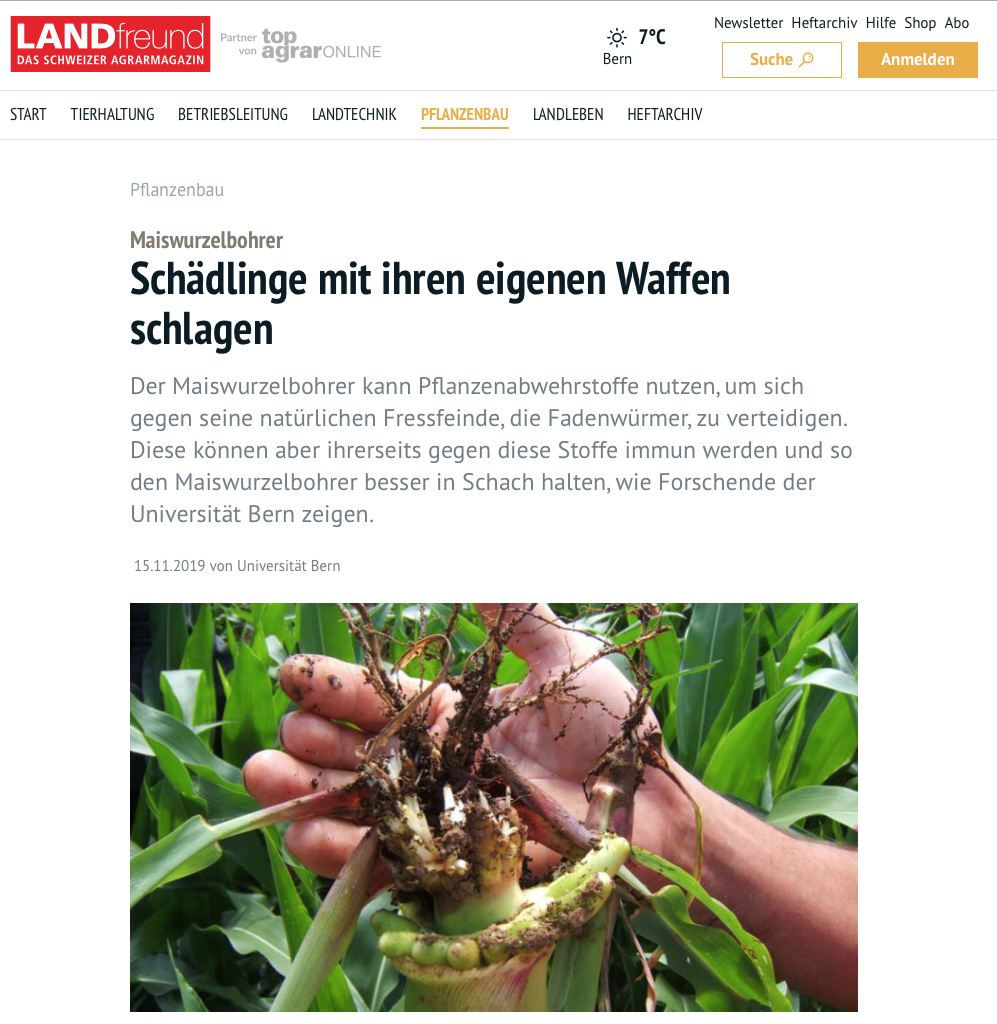
Read the news
4. A new quantum data classification protocol brings us nearer to a future quantum internet,published by Universitat Autònoma de Barcelona on 08/11/19
A new protocol created by researchers at the UAB sorts and classifies quantum data by the state in which they were prepared, with more efficiency than the equivalent classical algorithm. The algorithm represents a first step in the automated learning of quantum information networks. The research was published today in Physical Review X.
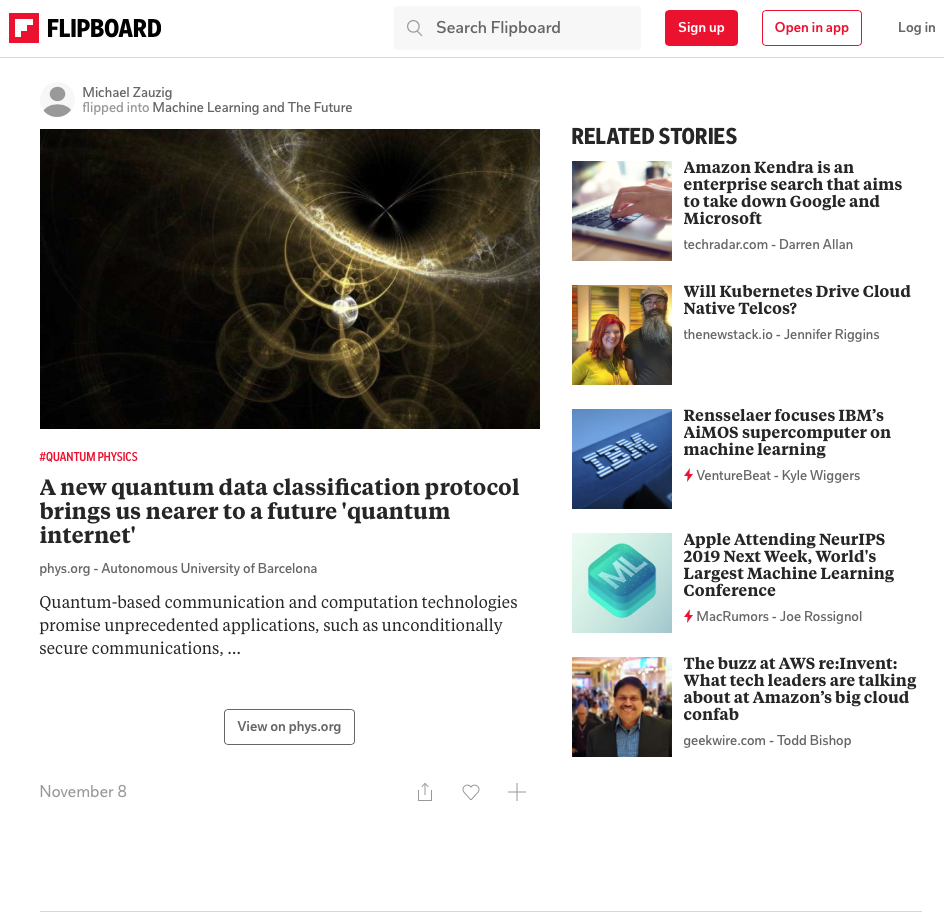
Read the news
5. Antibiotics from the sea, published by Friedrich Schiller University Jena on 18/11/1
International research team taps potential source of new antibiotics: The team led by Prof. Christian Jogler of Friedrich Schiller University, Jena (Germany), has succeeded in cultivating several dozen marine bacteria in the laboratory – bacteria that had previously been paid little attention. The researchers then carried out a functional characterisation of the bacteria, thus enabling a systematic screening for active substances. Initial bioinformatic analyses and cell biological observations indicate potential for the production of new antibiotics. The research team reports on this work in the current issue of the journal Nature
Microbiology.
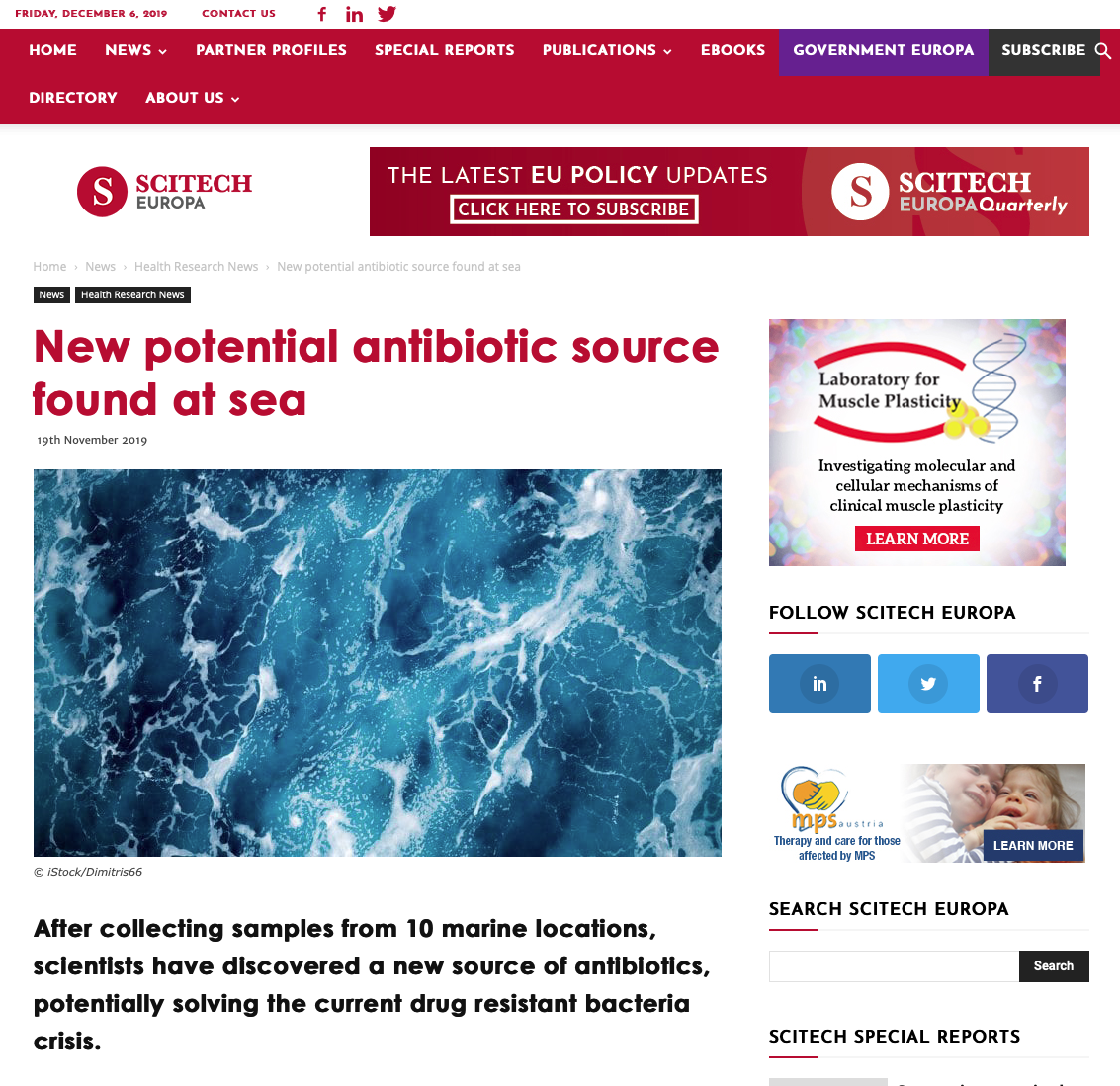
Read the news
News Managers' selections
Los principales cronobiólogos del mundo advierten de los riesgos para la salud que provoca el cambio de horario en otoño y primavera, 15/11/2019, University of Granada
Una investigación llevada a cabo por los principales cronobiólogos del mundo, en la que participa el catedrático de Fisiología de la Universidad de Granada Darío Acuña Castroviejo, ha advertido de que el cambio horario en otoño y primavera supone un importante factor de riesgo para la salud y bienestar, porque altera el sistema circadiano que regula y mantiene bajo control las funciones del organismo.

Read the news
Pupils who are born earlier in the year have fewer friends, 20/11/2019 Ghent University
Were you among the youngest students in your class? If the answer is yes, you might have felt at a disadvantage compared to your older classmates, and a host of scientific studies has shown that you were right feeling that way.
Read the news
La plus vieille colle du monde utilisée de la Préhistoire jusqu’aux Gaulois, 13/11/2019 CNRS (Délégation Paris Michel-Ange)
Utilisée dès le Paléolithique, la plus ancienne colle au monde, nommée brai de bouleau, a perduré pendant au moins 50 000 ans, jusqu’aux Gaulois. Ce goudron végétal, fabriqué par traitement thermique d’écorce de bouleau, était utilisé comme adhésif pour emmancher des outils ou décorer des objets. Les scientifiques pensaient qu’il avait disparu de l’Europe occidentale à la fin de l’âge de fer (800 av J-C – 25 av J-C) au profit des résines de conifères qui ont par la suite fait l’objet d’une véritable industrie à l’époque romaine, mais il n’en est rien.
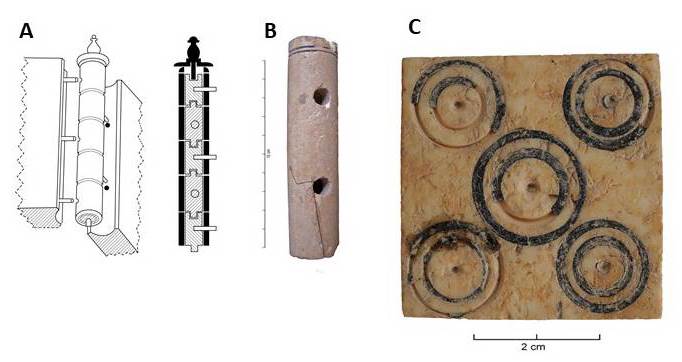
Caption:A - Schéma d’une charnière (dessin © S. Sorin, CNRS, CEPAM), modifié à partir de Deschler-Erb 1998. B - charnière de Nice (Tranfert Masséna; Alpes-Maritimes, échantillon MR6258). C - Plaque décolée de Narbonne (échantillons MR6253). Photos © J.-D. Strich, CNRS, CEPAM et I. Rodet-Belarbi, Inrap, CEPAM.Image caption: A - Schéma d’une charnière (dessin © S. Sorin, CNRS, CEPAM), modifié à partir de Deschler-Erb 1998. B - charnière de Nice (Tranfert Masséna; Alpes-Maritimes, échantillon MR6258). C - Plaque décolée de Narbonne (échantillons MR6253). Photos © J.-D. Strich, CNRS, CEPAM et I. Rodet-Belarbi, Inrap, CEPAM.Image caption: A - Schéma d’une charnière (dessin © S. Sorin, CNRS, CEPAM), modifié à partir de Deschler-Erb 1998. B - charnière de Nice (Tranfert Masséna; Alpes-Maritimes, échantillon MR6258). C - Plaque décolée de Narbonne (échantillons MR6253). Photos © J.-D. Strich, CNRS, CEPAM et I. Rodet-Belarbi, Inrap, CEPAM.
Read the news
Gewaltiger Tsunami traf vor 1.000 Jahren Oman, 19/11/2019 - Universität Bonn
Ein Naturereignis ähnlichen Ausmaßes hätte heute verheerende Folgen, warnen Forscher der Uni Bonn 15 Meter hohe Wellen, die Felsbrocken mit dem Gewicht eines Leopardpanzers ins Landesinnere schoben: So ungefähr kann man sich den Tsunami vorstellen, der vor etwa 1.000 Jahren die Küste des heutigen Sultanats Oman traf. Zu diesem Schluss kommt eine aktuelle Studie der Universitäten Bonn, Jena, Freiburg und der RWTH Aachen. Die Ergebnisse zeigen auch, wie dringend die Region ein gut funktionierendes Frühwarnsystem benötigt. Doch auch dann hätten Küstenbewohner bei einer ähnlichen Katastrophe maximal 30 Minuten Zeit, sich in Sicherheit zu bringen. Die Studie erscheint in der Zeitschrift „Marine Geology“, ist aber bereits online abrufbar.
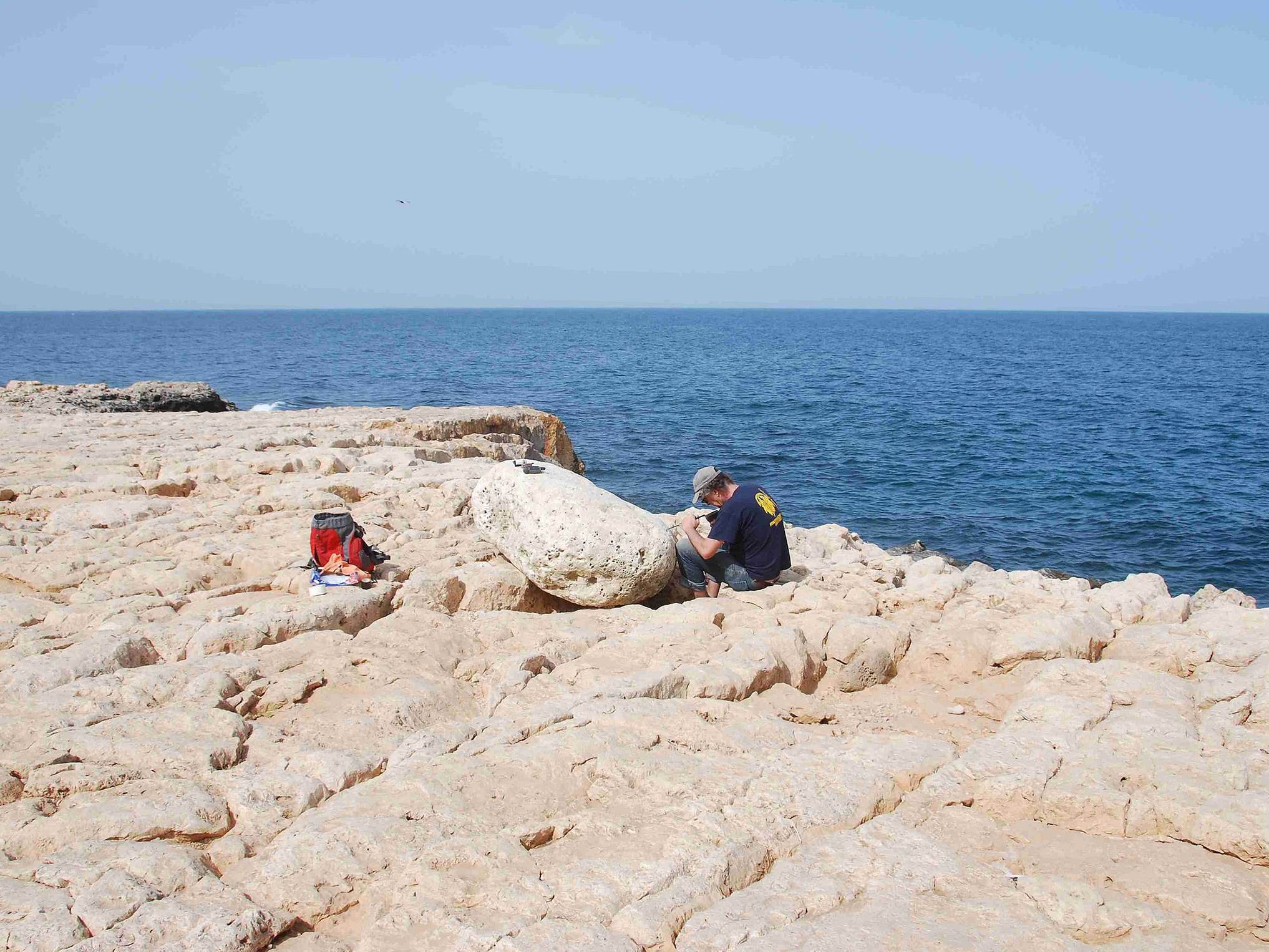
Klaus Reicherter von der Universität Aachen untersucht einen Felsbrocken, der von dem Tsunami auf die Klippen verfrachtet wurde. © Foto: Gösta Hoffmann/Uni Bonn
Read the news
Join the AlphaGalileo community
Journalists can see the latest breaking research news, including news under embargo, by registering for our free service. You can also join others interested in better research communication via the media on the social media at any of these sites.
Twitter Facebook LinkedIn Pinterest